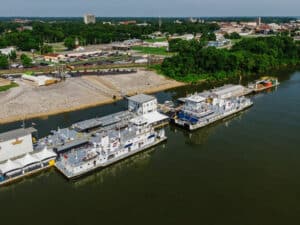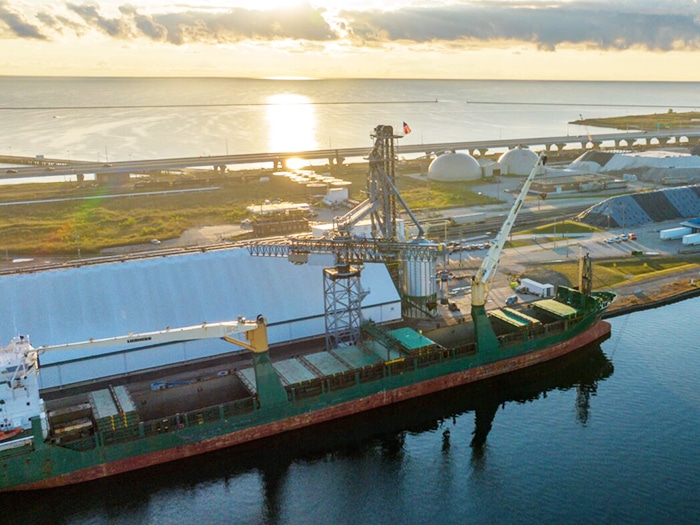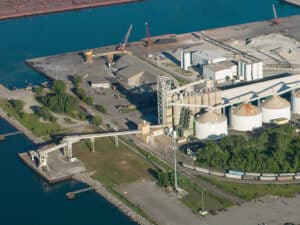
Seaway system set to see more U.S. soybean exports
Written by Nick Blenkey
DeLong’s Agriculture Maritime Export Facility is set to handle an additional 120,000 tonnes of U.S. soybean exports. [Photo: The DeLong Company]
As the recent temporary shutdown of the St. Lawrence Seaway by strike action underscored, the Great Lakes St. Lawrence Seaway system is a vital maritime trade artery whose smooth operation is too often taken for granted. Looking ahead, with low water levels on the Mississippi River a growing annual concern, its importance to U.S. agricultural exports, including soybean exports, is likely to grow.
The Soy Transportation Coalition notes that among the recently announced 2023 MARAD Port Infrastructure Development Grants was a $9,276,352 award to the DeLong Company’s Agriculture Maritime Export Facility’s Phase II project in Port Milwaukee, Wis.
Phase I of the facility was opened on July 18, 2023, and primarily has been used to export DDGs (distiller’s dried grains) to international markets via the Great Lakes St. Lawrence Seaway system. Phase II of the project will involve the construction of two grain storage silos, electrical service upgrades, and additional handling equipment. Once Phase II is completed, DeLong estimates it will be exporting an additional 120,000 tonnes of soybeans from the facility. In addition, soybean meal exports are a potential area of growth in the future.
The Soy Transportation Coalition approved $200,000 to help underwrite engineering, permitting, project management, and construction support expenses associated with Phase II of the project.
The coalition says it had three motivations to provide funding for the project:
- To provide meaningful investment to a project that will enhance U.S. soybean and soy product exports in the near future;
- To invest in the Great Lakes/St. Lawrence Seaway – a supply chain option that can and should be a more significant conduit to the global marketplace;
- For the DeLong Company and Port Milwaukee to be able to highlight the funding commitment from a farmer organization, which would enhance the viability and competitiveness of their grant application.
Soybean farmers have a long history of seeing their funding leveraged – thereby helping accelerate project completion and increasing its scale and scope. The investment by soybean farmers for DeLong’s Agriculture Maritime Export Facility is another tangible example of this.
During this time in which U.S. agriculture has a number of supply chain challenges (low water on the Mississippi River, drought conditions at the Panama Canal, for example), the coalition says it is imperative to have other supply chain options be available for farmers. While the Great Lakes/St. Lawrence Seaway accommodates a modest share of U.S. soybean exports compared to other regions of the country, it has the potential to play a more significant role in connecting soybean farmers with the rest of the world. The investment in the Port Milwaukee Agriculture Maritime Export Facility will certainly facilitate this.


![Tom Frazier aground and listing to starboard on Feb. 11, 2024. [Photo: U.S. Coast Guard]](https://www.marinelog.com/wp-content/uploads/2025/06/Towboataground-300x225.jpg)

